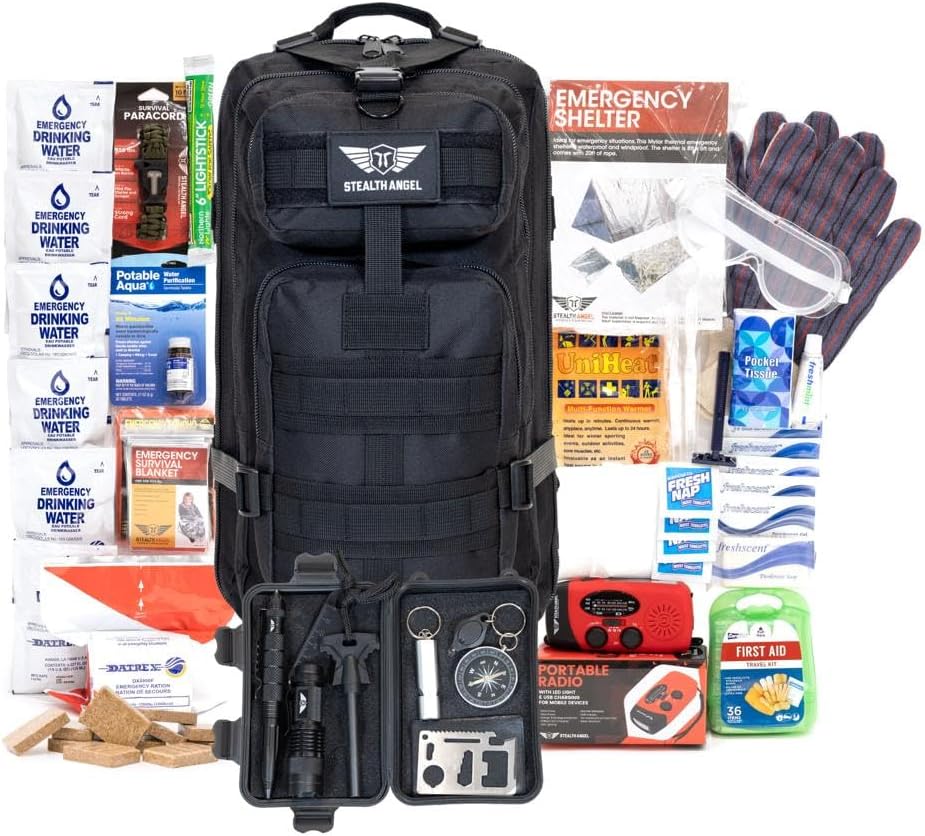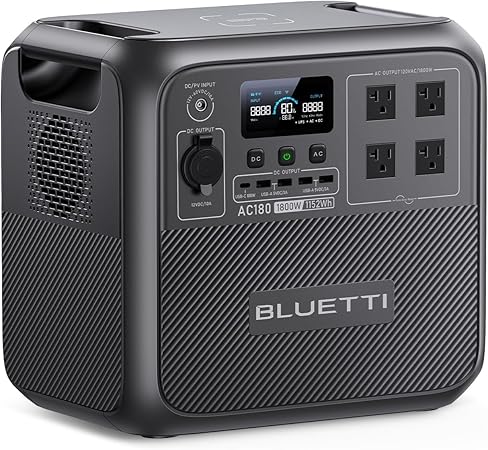
When disaster strikes, being prepared can make the difference between safety and chaos. The Stealth Angel Survival 72 Hour Family Emergency Kit is designed to give families peace of mind in the face of emergencies like earthquakes, hurricanes, floods, or power outages. Built to sustain one to five people for three days, this all-in-one survival bag aims to combine quality, organization, and practicality into one dependable package.
Design and Organization
The kit comes in a rugged, military-grade backpack that immediately gives the impression of durability and readiness. It’s made from tough water-resistant material and has multiple compartments for organization. This design makes it easy to locate items quickly in stressful situations. Adjustable padded straps make the bag comfortable to carry, even when it’s fully loaded. The overall size is compact enough to fit in a car trunk, closet, or emergency shelter without taking up excessive space.
Stealth Angel offers different versions of the kit depending on how many people it needs to support—ranging from 1-person to 5-person configurations. The larger kits come with more food, water, and duplicate survival essentials, ensuring that each family member is covered without sacrificing portability.
Emergency Food and Water Supplies
At the core of any emergency kit are the food and water provisions. Stealth Angel uses U.S. Coast Guard-approved emergency food bars and water pouches, both rated for a five-year shelf life. The food bars are calorie-dense and designed to sustain energy with minimal preparation. They may not be gourmet, but they’re compact, non-thirst-provoking, and nutritionally balanced for survival conditions.
The water pouches are individually sealed, making them easy to distribute among family members. For extended emergencies, the kit also includes water purification tablets, allowing you to create safe drinking water from natural sources.
Survival Tools and Equipment
The Stealth Angel kit is loaded with essential tools that cover light, shelter, warmth, and basic survival tasks. Among these are an LED flashlight, a multi-function tool, a compact survival knife, waterproof matches, an emergency whistle, and a fire starter. Each of these items is built with practicality in mind, emphasizing reliability over complexity.
The kit also includes a thermal emergency blanket and poncho for each person, providing warmth and protection from the elements. There’s a hand-crank flashlight and radio combo unit, which can be a lifesaver when power is out and communication is limited. The radio includes NOAA weather alerts, keeping you informed of ongoing storm patterns or rescue instructions.
First Aid and Hygiene
Medical emergencies often follow natural disasters, and the included first aid kit is a strong addition. It features bandages, antiseptic wipes, gauze, adhesive tape, tweezers, gloves, and a variety of other essentials. While it’s not a full trauma kit, it covers most common injuries such as cuts, scrapes, and minor burns.
Hygiene items are also included to maintain cleanliness during extended emergencies. The kit typically includes items like toothbrushes, soap, tissues, and moist towelettes. For families, these small comforts can make a huge difference in morale and health.
Communication and Safety Gear
One of the highlights of the Stealth Angel 72 Hour Family Kit is its attention to communication and situational awareness. The hand-crank radio doubles as a flashlight and USB charger, allowing you to power small devices in an emergency. There’s also a high-decibel whistle for signaling and reflective tape on the bag for visibility at night.
Additionally, the inclusion of glow sticks, paracord, and a small compass gives users a basic navigation and illumination setup for low-light conditions or nighttime evacuations.
Performance and Real-World Use
In real-world testing, the Stealth Angel Survival Kit performs as a practical and well-thought-out emergency package. Everything inside serves a clear purpose, and the gear quality is above average compared to many budget survival kits on the market. The tools feel solid, the food and water are legitimate emergency-grade supplies, and the backpack holds up well to rough handling.
Families who live in hurricane, earthquake, or flood-prone areas will find this kit especially useful. Having all the essentials organized in one place means you can grab it and go when every second counts.
Maintenance and Upgrades
While the Stealth Angel 72 Hour Kit is comprehensive, it’s always wise to personalize it. Adding prescription medications, baby supplies, pet food, or additional clothing will tailor it to your family’s needs. Checking the expiration dates on food and water every few years ensures readiness when disaster strikes.
Conclusion
The Stealth Angel Survival 72 Hour Family Emergency Kit stands out as a reliable, well-equipped, and thoughtfully designed emergency solution. It balances quality and convenience, offering families a sense of security during uncertain times. Whether you’re preparing for natural disasters, extended power outages, or travel emergencies, this kit provides the essential foundation for survival.
In summary, the Stealth Angel kit delivers on its promise: a comprehensive, durable, and ready-to-use survival package capable of protecting your family for 72 hours in almost any emergency situation.









